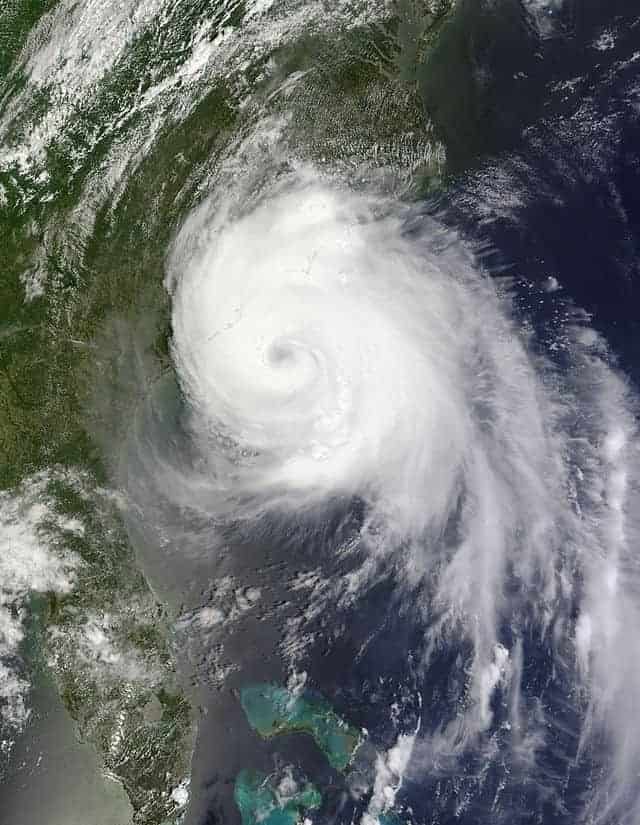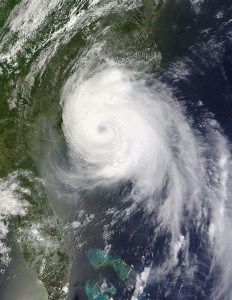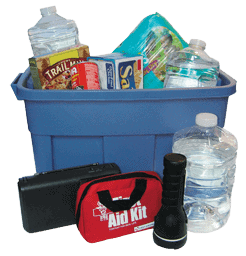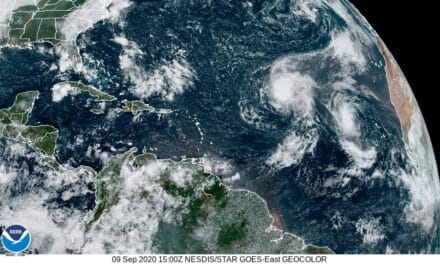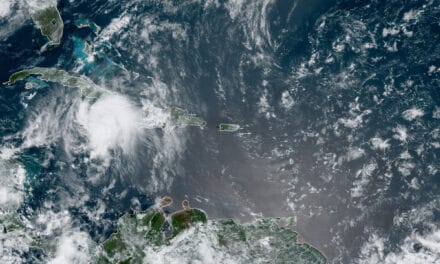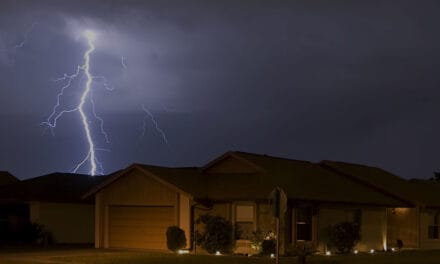Hurricanes and tropical storms differ from other types of natural disasters in that we often have advance warning of their approach. Forecasters can predict the weather conditions that make tornadoes and other weather events likely, but the warnings are often issued just minutes before they strike. Tropical Cyclones usually give us days of advance warning. And while those warnings save countless lives, they also give a false sense of security.
It is just too easy to say “I’ll deal with it when it happens” and then at the last minute there isn’t enough time and all the supplies are sold and the evacuation routes are clogged with traffic. Inevitably, many are not even aware of their own evacuation route or how local authorities notify residents of an evacuation. Don’t be caught unaware.
Tropical storms and hurricanes are dangerous weather events that take many lives and cause widespread damage to homes, businesses, and economies. If you live along the Atlantic Coast or Gulf Coast, your home and family are at risk. How much risk depends on your actual location which affects your emergency plan and how you implement it.
Determine Risk
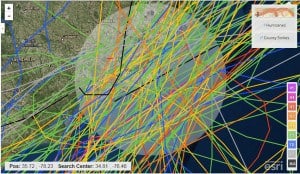
NOAAs Historical Hurricane Track tool can show the historical tracks for any location affecting the US Coastlines
What are the chances that a hurricane or tropical storm will make landfall within 300 miles of your home? Large storms often exceed 600 miles in diameter and their effects reach far beyond the eye. Hurricane Sandy had gale force or higher winds that extended across an area 950 miles wide.
While Sandy was one of the largest diameter hurricanes on record, six-hundred-mile-wide storms are not uncommon.
Extreme winds and the damage they cause to buildings and infrastructure makes for big headlines, but storm surge and the associated coastal flooding causes more fatalities than high winds. Inland flooding can happen long after the hurricane makes landfall and is the most frequent cause of fatality. Tornadoes are another type of cyclone and hurricanes can spawn them before, during, and after the hurricane makes landfall.
The National Oceanic and Atmospheric Administration (NOAA) offers their Historical Hurricane Track tool that allows you to view the tropical cyclones that have tracked through a specific area. Set your location on the map and color-coded storm tracks automatically appear. You’ll see the tropical depressions, tropical storms, hurricanes and major hurricanes appear, along with a circle. A National Hurricane Center page shows the approximate frequency that hurricanes occur in a specific area.
Develop a Plan
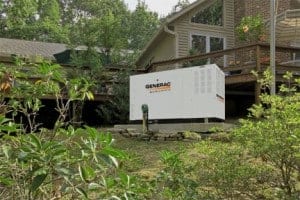
A standby generator helps keep homes safe with an emergency supply of backup power for heating and cooling, refrigeration, pumps, and other necessities.
Information and advance planning are the best defense against an approaching hurricane. Invest in a weather radio that broadcasts alerts to keep apprised of developing threats and to know when a tropical cyclone threatens your area. Find out if you live in an evacuation zone and then learn evacuation routes and contact local authorities to find out how residents are notified of evacuations. Then pick a destination in case you have to leave. In most cases, further is probably better. Don’t forget that your pets will go with you.
If you’re not in an evacuation area, you might make the decision to stay home. Your advance planning should include a source of electricity from a standby generator. Standby units operate for days or weeks without refueling—an important feature when gasoline supplies are short and lines are long. Don’t forget maintenance supplies to keep the generator running during outages that extend beyond a week or even longer.
Store non-perishable food supplies and water for at least a week or two. Each person needs a minimum of one gallon of water per day. That’s fourteen gallons for each person. One or two gallon containers are best because they are easily moved and can be taken along if you must evacuate unexpectedly. Canned and dried foods last for years and are easily rotated into your daily food supply.
The Department of Homeland Security offer a list of items for a Disaster Supply Kit that everyone should keep on hand.
Prepare Your Home In Advance
Advance Preparation
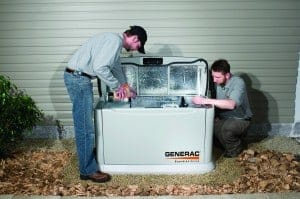
Perform generator maintenance before the storm arrives to ensure they are ready for use when the power goes out.
News stories often highlight the empty shelves at grocery stores and the long lines at gas stations. No sooner do local residents hear of an approaching storm than they stock up on everything they need and don’t need. Avoid the long lines and empty shelves by taking a few steps in advance.
Keep a supply of gasoline on hand for vehicles and portable generators. Stored gasoline will stay fresh up to a year with the correct stabilizer additive. Have enough on hand to fill one vehicle tank, and work on a monthly rotation—pour a five gallon container into your car’s tank, then fill the container when you finish filling up the car. Use approved containers that you can easily move and handle.
Purchase and prepare other supplies ahead of time. Do as much labor as possible before any threat exists. One example often cited are plywood for windows and doors. Buy 3/4-inch plywood in advance, cut it to size and label for each window, drill the screw holes, and store with heavy duty screws already started that reach well into the home’s framing. This is just one example of many preparations that you should make in advance.
Engines that receive regular exercise run better, start easier, and have a longer life. Exercise refers to a short cycle that allows the oil to circulate and the engine to reach it’s normal operating temperature. Standby generators do this automatically, but a portable that sits in the garage most of the year should receive a little exercise once in a while. Pour a little gasoline into the tank, start it and let it run for five minutes. Drain the remaining fuel and run the carburetor dry.
After you’ve developed your plan and put together your emergency kit and stored food and water, talk with family members about the plan and how you will implement it. Everyone should know where to meet and what to do in the event of an approaching storm.
Storm Watches
As soon as a storm is forecast that may possibly affect your home and family, get ready to take action. Go through your list of supplies and make sure everything is assembled and ready. Your emergency disaster kit should be ready to go. Water supplies checked and filled. Food supplies ready. Start and run your electric generator for a few minutes.
Fill vehicle tanks and keep them full. Make sure stored fuel supplies are also full. If some parts of your home are vulnerable to flooding, such as the basement, move any disaster preparedness items to higher floors. Check your pumps and make sure they are in good working order.
Gather family and discuss the approaching storm and your plan for dealing with it. Pay attention to news broadcasts, keep the weather radio handy, and stay apprised of the approaching storm.
If it appears likely you will evacuate, sooner is better than later. Prepare the house as quickly as possible. Notify trusted family that you are evacuating. Load everyone and everything into your best vehicle including your pets, and leave. After you arrive at your destination, notify the same family members that you are safe. There are few things more worrisome after a disaster than not knowing everyone is safe.
For those hunker down and weather the storm, remember that cell phones are often more reliable after a disaster than land lines. Make sure your bill is paid and you have plenty of minutes and data available. You’re probably going to need it.

